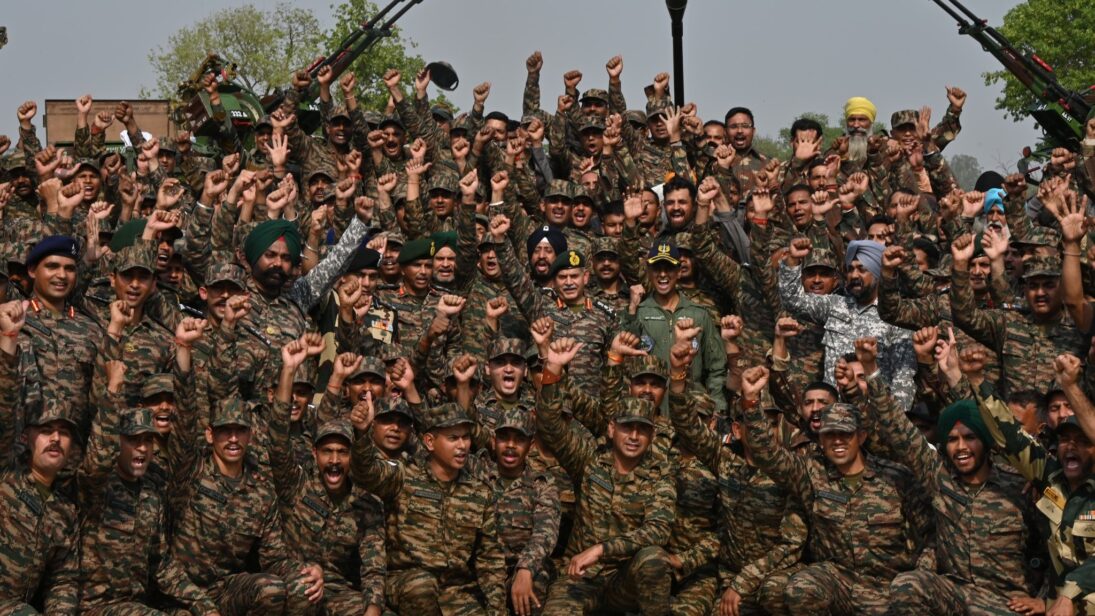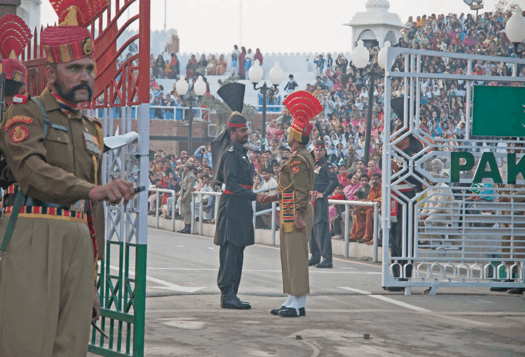
India-Pakistan tensions have flared up into a crisis once again. On May 7, India launched missile strikes into mainland Pakistan and Pakistan-administered Kashmir in response to a deadly militant attack in Pahalgam in Indian-administered Kashmir. The days of fighting that ensued marked an even more serious escalation than the 2019 Pulwama/Balakot crisis. The crisis broke an over four-year ceasefire on the Line of Control and further exposed the persistent militarized nature of their relationship. While a ceasefire was announced on May 10, the broader regional outlook remains tense.
However, this latest episode underscores a broader and longer-term trend that has continued to develop since the 2019 Pulwama crisis: both India and Pakistan have steadily expanded and modernized their military capabilities, though with significantly different trajectories. The most recent conflict—marked by the use of drones, fighter jets, and missiles imported from a range of suppliers—has also drawn attention to the role of both domestically-produced and imported weapon systems by the two countries. Using the latest data from the Stockholm International Peace Research Institute (SIPRI), this piece analyzes recent trends in India and Pakistan’s military spending and arms procurement and considers the implications these trends may have for each country’s strategic priorities and regional security objectives.
As of 2024, India’s military budget is over eight times that of Pakistan—up from just three times larger in 1956, the first year for which SIPRI data is available for both countries.
Military Expenditures: A Diverging Story
Since gaining independence in 1947, both India and Pakistan have steadily raised their military spending amid recurring tensions. However, their trajectories have diverged. In recent decades, India surged to become one of the biggest spenders in the world, whereas Pakistan’s spending remained largely flat with marginal increases since the 1990s. As of 2024, India’s military budget is over eight times that of Pakistan—up from just three times larger in 1956, the first year for which SIPRI data is available for both countries (see figure 1). This widening gap aligns with both India’s faster economic growth and its intensifying tensions with China, which have motivated greater defense spending. However, data on Pakistan’s expenditure likely understates its actual defense capabilities, as it does not account for significant military aid, especially from China, that support Pakistan’s major defense imports.
Figure 1: Military Expenditure Comparison: India and Pakistan, 1956-2024

India’s military budget has followed a largely upward trajectory since the Sino-Indian war in 1962 and the second Indo-Pakistani war in 1965: its spending almost doubled between 1962 and 1972. This trend continued steadily through the 1999 Kargil war, with military spending that year being 40 percent greater than in 1989. This defense spending expanded further over the following two decades, driven by Indian military modernization and perceived threats vis-à-vis Pakistan and China. In 2019, India became the world’s third-largest spender after the United States and China for the first time, after real-term increases (after adjusting for inflation) in all but two years over the previous 20-year period. In 2024, India was the fifth-largest military spender in the world with USD $86.1 billion in expenditure.
In contrast, Pakistan’s military spending has shown relatively modest growth amid economic volatility. While its budget has shown periodic spikes historically, particularly during moments of heightened tensions with India, Pakistan has struggled to maintain sustained increases due to chronic fiscal instability and inflation in recent years. In 2024, Pakistan’s military expenditure declined for the third consecutive year to USD $10.2 billion, representing a real term decrease of 5.1 percent compared to 2023.

However, despite economic difficulties and lower absolute spending numbers, Pakistan has consistently devoted a higher share of its GDP and government spending to defense compared to India (see figure 2), underlining the importance of the military in Pakistan’s budgetary priorities. Between 2015 and 2024, Pakistan allocated on average 17 percent of government expenditure to the military—the second highest in the Indo-Pacific region—compared to just 8.6 percent by India.
One important caveat when evaluating the full scope of military preparedness and deterrence dynamics in the region is the lack of public information on either country’s nuclear spending, despite both India and Pakistan maintaining and modernizing their nuclear arsenals. Therefore, most available data—including from SIPRI—reflects only conventional military expenditures and investments.
Figure 2: India and Pakistan’s Military Expenditure as a Share of GDP, 1960-2024

Arms Modernization: Pursuit of Self-Reliance Amid High Foreign Dependence
Both India and Pakistan rank among the world’s largest arms importers, but their procurement patterns and production capacities reflect increasingly divergent strategic alignments, external partners, and domestic capabilities.
India was the world’s second-largest arms importer between 2020 and 2024, accounting for 8.3 percent of global imports. While Russia remains its largest supplier—providing 36 percent of India’s major arms during this period, Moscow’s share now is significantly smaller than it was in 2015-19 (55 percent) and 2010–14 (72 percent). As noted in a recent SIPRI report, India is steadily shifting toward Western suppliers such as France, the United States, and Israel, responding to both internal concerns about overdependence on Russia as well as growing strategic convergence with the West. The shift is also visible in India’s new and planned orders for major arms from Western suppliers, such as the United States and France.
In the long term, New Delhi also hopes to reduce its reliance on arms imports by focusing on a more robust domestic industry. Since the 2014 “Make in India” initiative, India has aggressively promoted defense indigenization as well as local production, including through partnerships with foreign companies. These priorities are also clearly reflected in India’s budgetary allocations: in its 2024 military expenditure, 75 percent of its capital outlays were earmarked for domestic arms producers. This push for indigenization has yielded some results: in 2023, three Indian firms were among SIPRI’s top 100 arms-producing companies globally. India has also made progress in producing armored vehicles, drones, and submarines—mostly through licensed production of foreign designs—but it does remain reliant on imports for some more advanced systems, including combat aircraft.
In comparison, Pakistan remains far more reliant on foreign arms, with imports accounting for over 90 percent of its military acquisitions today. Between 2020 and 2024, Pakistan was the world’s fifth-largest arms importer. Although it has also promoted self-reliance in arms production, its domestic industry remains limited—capable primarily of licensed production with China and Maintenance, Repair and Operations for imported systems, and no Pakistani companies have ever ranked among the world’s 100 biggest arms producers.
China has emerged as Pakistan’s overwhelmingly dominant arms supplier. While the United States and China each accounted for close to 40 percent of Pakistan’s imports in the late 2000s, Beijing’s role has expanded substantially as Islamabad’s purchases from Western countries have dwindled. Between 2020 and 2024, China supplied 81 percent of Pakistan’s major arms imports—up from 74 percent in the previous five-year period. It now relies heavily on imports or licensed production of Chinese arms, including those designed specifically for Pakistan, such as most of its combat aircrafts and air-to-air missiles. Various deals with U.S. and European suppliers previously resulted in some production under license (e.g. the US M-113 armored personnel carriers) with few cases of successful technology transfer. However, as the United States curtailed military ties with Pakistan over the last decade, Islamabad shifted away from buying U.S. arms and increasingly added Chinese weapons to its arsenal.
In this context, understanding India and Pakistan’s evolving military capabilities and procurement strategies is crucial not only for assessing their strategic posture, but also for evaluating the prospects for deterrence and long-term conflict prevention, as was visible during this most recent crises.
The Geopolitics of Arms Transfers
South Asia’s military balance is increasingly shaped not only by regional competition, but also by the strategic interests of external powers who sell arms to the principal actors. Many of India and Pakistan’s foreign-procured systems were on display during the latest confrontation: India’s strikes involved Israeli-made drones and fighter jets and precision-guided munitions from France and Russia. Pakistan used Chinese-made J-10C fighter jets and JF-17s co-developed with China, both equipped with China’s PL-15 air-to-air missiles—marking the first time the J-10C and PL-15s had been used in conflict. In a sense, this India-Pakistan bout of fighting was seen by international observers as a battleground to test the performance of different Chinese, Westerns and Russian weapons systems in actual combat. This has implications for New Delhi and Islamabad’s future defense cooperation arrangements and strategic alignments going forward.
This India-Pakistan bout of fighting was seen by international observers as a battleground to test the performance of different Chinese, Westerns and Russian weapons systems in actual combat.
This conflict has also illustrated that the disparities in military spending and procurement do not automatically translate into effective deterrence or battlefield dominance. Despite India’s significantly higher military expenditure and broader arms industrial base, the conflict exposed limitations on both sides and did not result in an emphatic win for either side, with the two countries continuing to be locked in an adversarial relationship with little resolution of their disputes in sight.
The implications of this are significant: future crises may not only escalate quickly with enhanced capabilities but could also be shaped by the growing defense partnerships India and Pakistan maintain with major powers such as the United States, China, and Russia. As geopolitical tensions persist in South Asia as well as the wider Indo-Pacific, India and Pakistan are both likely to continue prioritizing military spending and modernization, exacerbating a regional arms race and reinforcing further instability in the region’s security landscape.
Note: All spending figures and GDP are in U.S. dollar, at current prices and exchange rates. Changes are in real terms, based on constant (2023) U.S. dollar.
Views expressed are the author’s own and do not necessarily reflect the positions of South Asian Voices, the Stimson Center, or our supporters.
Also Read: India’s 2024-2025 Defense Budget: Incremental Progress at Best
***
Image 1: ADGPI via Facebook
Image 2: Pakistan Military Forces via Facebook


